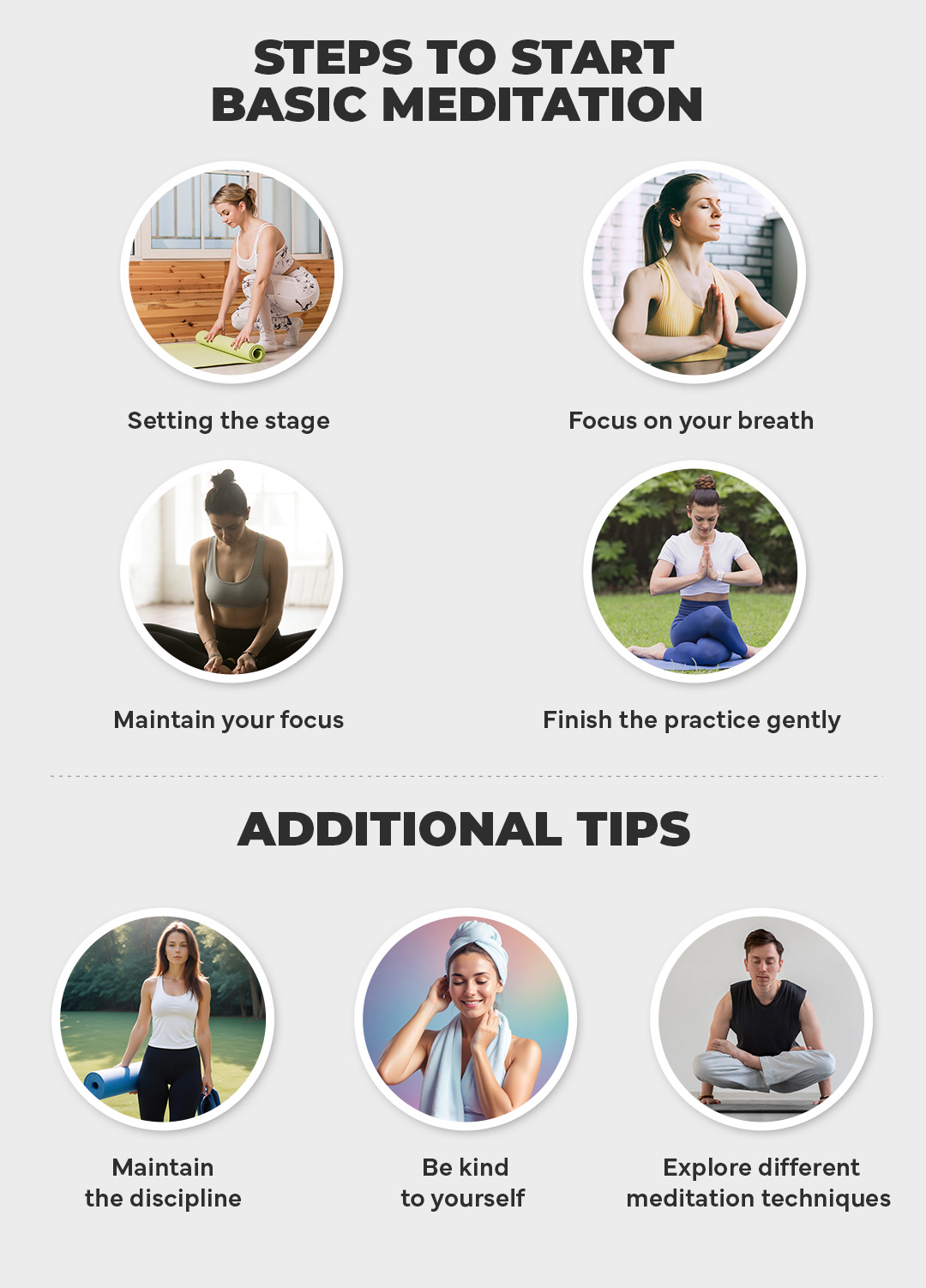
Meditation is a timeless practice that provides various physical and mental wellness advantages, such as lowered stress levels, heightened concentration, and improved overall health. As newcomers embark on this path, numerous queries arise—one of the main ones being how to place your eyes during meditation. The choice of whether to keep your eyes open or closed is often underestimated yet is essential. Each approach presents its distinct advantages and disadvantages, and grasping these can greatly influence the efficacy of your practice.
**Meditating with Eyes Closed**
Meditating with your eyes closed is the more classic and widely adopted technique. It tends to foster a deeper, more contemplative experience by reducing visual distractions. Here’s why many practitioners opt for this method:
– **Improved Concentration**: Shutting your eyes can assist in redirecting your focus inward, enhancing your awareness of your breath, mantra, or thoughts. The absence of visual input promotes a stronger bond with your inner being.
– **Serenity and Relaxation**: Closed-eye meditation may cultivate a state of tranquility by letting your mind settle more easily into a meditative mood. Beginners often find attaining serenity and calmness simpler without visual disruptions.
– **Creativity and Visualization**: Those engaged in imaginative visualizations or guided meditations frequently benefit from closed eyes, as this can ignite creativity and enable vivid imagery to surface more effortlessly.
However, meditating with closed eyes may induce sleepiness or even slumber, especially if you’re already weary or reclining.
**Meditating with Eyes Open**
Meditating with your eyes open provides a distinct array of benefits and can be equally fulfilling:
– **Awareness of Environment**: Open-eye meditation can enhance your awareness and mindfulness of your surroundings, bridging the gap between the meditative experience and daily life. This technique is often utilized in Zen (Zazen) meditation practices.
– **Increased Alertness**: By leaving your eyes open, remaining alert and fending off drowsiness may become easier, making it advantageous when you’re tired but wish to persist with your practice.
– **Flexibility**: The ability to meditate with your eyes open allows for easier integration of meditation into your everyday activities. For instance, you can practice micro-meditations while walking, commuting, or even working at your desk.
Conversely, keeping your eyes open may lead to distractions, particularly in settings rich with external stimuli and noise, making it more difficult for some to direct their focus inward.
**Finding Your Path**
Ultimately, the decision between meditating with eyes open or closed comes down to personal choice and the objectives of your meditation practice. Here are some suggestions to assist you in making a decision:
– **Experimentation**: Test both techniques to discover which feels more comfortable and effective. You may observe variations in the depth of your meditation and the levels of clarity and tranquility attained through each method.
– **Evaluate Your Surroundings**: In a serene, quiet space, closed-eye meditation might enhance your concentration. In a natural environment or a lively setting, open-eye meditation can capitalize on the surrounding energy and help sustain mindfulness.
– **Combine Techniques**: Consider utilizing a hybrid technique—begin with your eyes closed to focus yourself, then gently open them to maintain a sense of awareness and presence.
Recognizing how your eye position impacts your meditation journey is merely one aspect of your path. Embrace the adaptability of this choice, and you may discover that the practice of meditation evolves into a nurturing component of your life, providing insights and clarity throughout your journey.